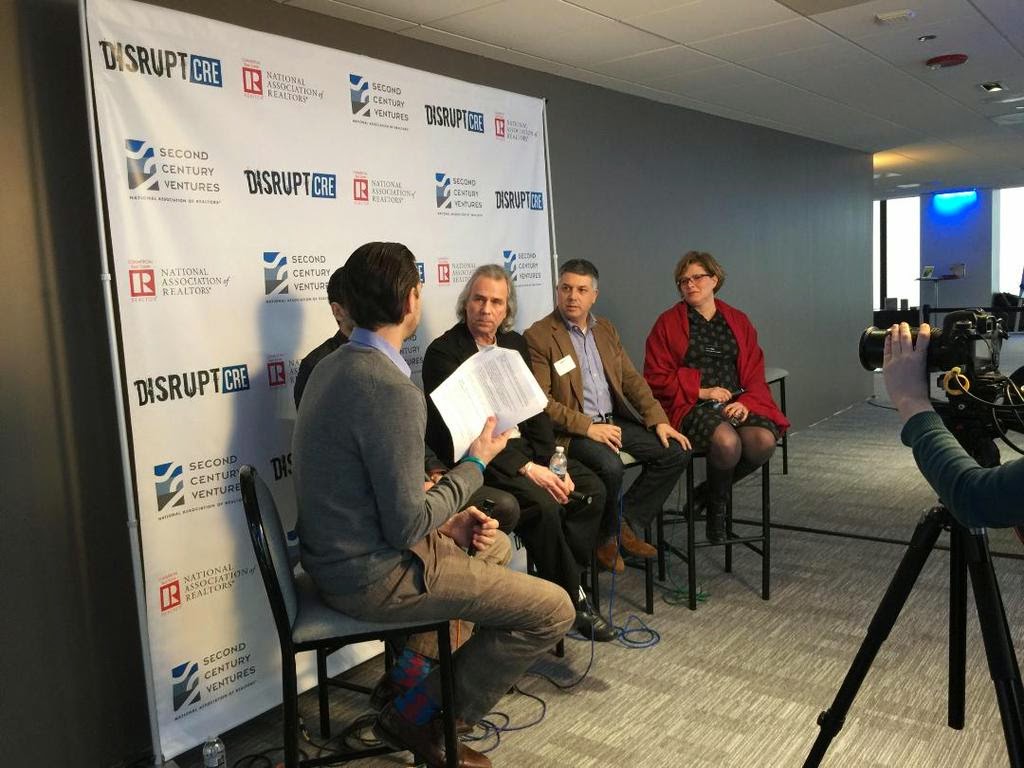Inside the Box: Rethinking Space from Disrupt CRE Chicago Conference, 1/29/15 from John Fecile on Vimeo.
Tear down those office walls? Open up that space? Not so
fast
Meg Graham
Chicago Blue Sky
30 January 2015
Offices are no longer as simple as a couple of cubicles and
a water cooler. But taking down walls and throwing in a ping pong table doesn’t
automatically inspire innovation, panelists said Thursday at DisruptCRE.
Panelists discussed the changing nature of offices at the
real estate and technology conference at Willis Tower. The panel, titled
“Inside the Box: Rethinking Space,” included 1871 CEO Howard Tullman, Gensler
global design leader and design principal Carlos Martinez, IdeaPaint president
John Stephans and SpaceTrak CEO Kristine O’Hollearn. The panel was moderated by
Chris Bentley, midwest editor of The Architect’s Newspaper.
The panelists discussed a growing hesitation toward the
open-office trend.
“We think that ‘open’ is over, that we’re going backward to
more contained spaces, more identity, more sound control,” Tullman said. “We’re
discovering that there’s a myth about multitasking — which is actually that
you’re doing a lot of things poorly.”
He said an analysis of 1871 shows that.
“In our time-lapse measurements of our space, we’re seeing
that anytime anybody wants to concentrate, focus or get any kind of privacy or
any work done, they literally leave the space and go to a quieter space,”
Tullman said. “Frankly, if 80 percent of the time you’re exiting your space to
get work done, there’s probably the case that your space isn’t working for
you.”
But that isn’t to say that open offices don’t work for
anyone. Each office should design space according to its needs and goals,
Gensler’s Martinez said.
“We no longer have a single answer to workplace,” he said.
“Workplace is emerging so that every company, every workgroup needs different
solutions and the offices are being designed now to accommodate the diversity
of those work environments.”
Offices are often missing one crucial element to spark
collaboration and new ideas, Martinez said.
“We have been promoting this notion that there are four key
work modes,” he said. “I think that the one that many times gets underleveraged
is this idea of the importance of socialized space — great collaboration starts
first from a social dynamic.”
IdeaPaint’s Stephans emphasized that those fun, social
spaces require leadership.
“You can design the greatest space, but if leaders of an
organization don’t make it clear that it’s space to let your ideas out, then
it’s just space and it becomes empty,” he said.
Panelists also said spaces must be “hackable” and flexible —
allowing employees to change the configurations and interact with the space.
“We don’t all work the same. We don’t all think about
working the same way,” O’Hollearn said. “We have to be able to go to those
spaces… and convert and have a flexible environment where we can move the
furniture around to individualize it.”







